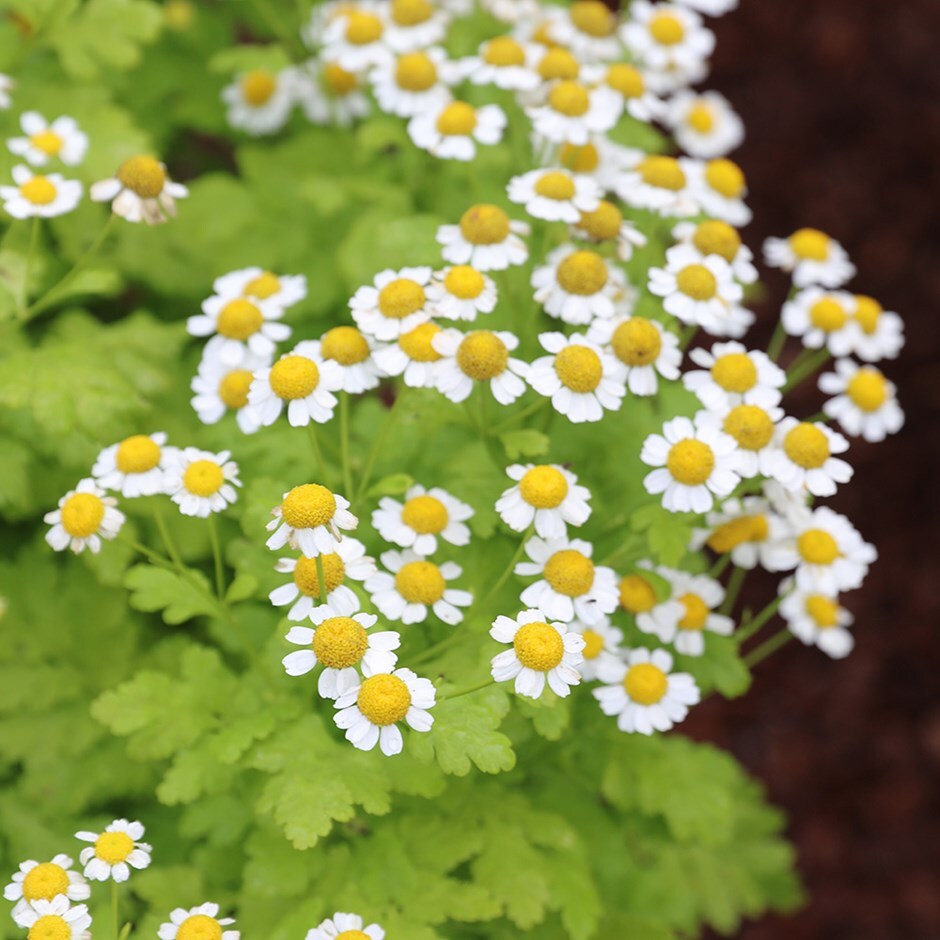feverfew | Tanacetum parthenium
feverfew or Tanacetum parthenium




Grown for both its handsome good looks as well as its medicinal properties, the daisy-like flowers of this bushy perennial herb will attract bees and other beneficial insects and will look wonderful when dried and added to potpourri.
The aromatic foliage acts as a natural repellent to many troublesome pests including wasps, flies, ants and some beetles, while medicinally, feverfew has been used to treat migraines, reduce fevers and swelling as well as aid digestion.
Feverfew thrives in full sun and well-drained soil, though it will tolerate poor conditions once established. Water during dry spells in the first year, but after that it generally copes well without much attention. Deadhead regularly to prolong flowering and prevent excessive self-seeding, as it can spread freely if left unchecked.
Cut the whole plant back hard after flowering to encourage fresh basal growth and maintain a compact shape. Divide clumps every few years to reinvigorate plants and prevent them from becoming woody. Feverfew is naturally pest- and disease-resistant, making it a low-maintenance choice for borders and cottage gardens.
Start early or late sowings off under glass, but it is possible to sow directly into a sunny, well prepared bed during warmer weather. When sown in seed trays, just cover the seed and keep well watered but not wet.
Pot on when large enough to handle and harden off before planting at 30cm (12in) intervals outside in late spring or early summer. A prolific self-seeder, the flowers should be removed promptly if you want to maintain a more modest patch.
Full sun
Fast-growing
Moderately fertile, moist, well-drained soil
Fully hardy

common chamomile
roman chamomile / Chamaemelum nobile
| 9cm pot | £7.99 |
|
| 2 + 1 FREE 9cm pots | £15.98 |
|
| approx 400 seeds | £3.19 |
|
Get the latest from RHS Plants, including offers and inspiration. Plus - save 10% off your first order when you sign up.
View our Privacy Policy
© RHS Enterprises Limited 2025
Registered in England & Wales No. 01211648. | VAT No. GB461532757 | Registered Office: 80 Vincent Square, London, SW1P 2PE.
All sales help fund the charitable work of the RHS.

